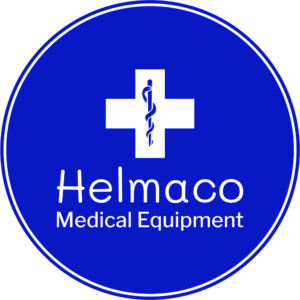Half-Dose TNKase Holds Up for Pharmaco-Invasive Reperfusion in STEMI
When timely angioplasty is unavailable to older ST-segment elevation myocardial infarction (STEMI) patients, a modified pharmaco-invasive reperfusion strategy could be reasonable, according to the STREAM-2 trial.
Half-dose tenecteplase (TNKase) produced ECG changes that were at least comparable to those after primary percutaneous coronary intervention (PCI) in a cohort presenting within 3 hours of STEMI symptom onset but unable to undergo primary PCI within 1 hour, reported a group led by Frans Van de Werf, MD, PhD, of KU Leuven, Belgium.
After last angiography, majority (≥50%) resolution of ST-segment elevation was achieved in 85.2% of those assigned pharmaco-invasive treatment with tenecteplase vs 78.4% of peers who had upfront primary PCI (P=0.05). Residual median sums of ST deviations measured 4.5 vs 5.5 mm (P=0.02).
The STREAM-2 trial results were published in Circulationopens in a new tab or window and were previously presented at the American College of Cardiologyopens in a new tab or window meeting earlier this year.
Although tenecteplase dosing was halved for safety reasons in this population of people 60 years and older, brain bleeds were nevertheless higher than expected, echoing the excess intracranial hemorrhages (ICHs) with standard-dose tenecteplase in the preceding STREAM-1 trialopens in a new tab or window.
Van de Werf and colleagues reported that in STREAM-2, there were 10 strokes in total: six ICHs occurred in the pharmaco-invasive arm (1.5%), zero ICHs in the primary PCI arm, three ischemic strokes in the pharmaco-invasive arm (0.75%), and one ischemic stroke in the primary PCI arm (0.5%).
They stressed that all six ICHs were in people under age 75 and three of them were protocol violations: two tenecteplase recipients got therapeutic doses of unfractionated heparin during rescue PCI despite full-dose IV and subcutaneous enoxaparin being given shortly before, and one person turned out to have uncontrolled hypertension.
“We cannot discriminate why the ICH rate we observed was higher than anticipated despite the use of half-dose tenecteplase, but major protocol violations in half of the cases were probably contributing factors,” study authors said, noting that this observation “reinforces the need for clear and timely communication regarding given treatments between various members of the health care team when rapid transitions in STEMI care unfold.”
In any case, the 30-day composite endpoint counting death, shock, heart failure, or reinfarction was equal between groups (12.8% of tenecteplase arm vs 13.3% of primary PCI group, RR 0.96, 95% CI 0.62-1.48).
“In summary, provided that contraindications to fibrinolysis are observed and excess anticoagulation is avoided, a pharmaco-invasive treatment as used in this trial is an effective reperfusion strategy in older, early presenting patients with STEMI,” Van de Werf’s team wrote. With primary PCI, the two “reperfusion therapies appear to be legitimate options in appropriately selected patients within a global context in which it is not possible to achieve timely PCI.”
Current STEMI guidelines recommend primary PCI for reperfusion of STEMI when performed within 2 hours after first medical contact — an unattainable goal for many patients presenting initially to non-PCI-capable hospitals. In this case, a pharmaco-invasive strategy is an endorsed alternative.
STREAM-2 was an open-label trial conducted in 49 centers in 10 countries. Participants averaged 70.5 years of age and nearly one-third were women. The median Thrombolysis In Myocardial Infarction (TIMI) risk score was 4.
STEMI patients were randomly assigned 2:1 to half-dose tenecteplase followed by coronary angiography and PCI if indicated (n=401) or upfront primary PCI (n=203).
Overall median times from symptom onset to randomization were 97 minutes for pharmaco-invasive and 92 minutes for primary PCI patients. Median times from randomization to tenecteplase or sheath insertion were 10 and 81 minutes, respectively.
Whereas patients randomly assigned to pharmaco-invasive treatment received tenecteplase within 10 minutes no matter their randomization location, the time to sheath insertion was shorter for patients randomized to PCI while they were in an ambulance vs at a community hospital (median 65 vs 110 minutes).
For 42.2% patients randomly assigned to tenecteplase, urgent angiography was performed for possible rescue PCI at a median time of 142 minutes from randomization.
TIMI flow grade 3 at last angiography was approximately 87% in both groups.
The incidence of major non-intracranial bleeding was below 1.5% across study arms.
“The use of half-dose tenecteplase with improved antithrombotic treatment in the pharmaco-invasive strategy, more frequent use of radial access (>90% in both groups), and advances in interventional technologies may have contributed to the lower-than-anticipated and comparable clinical efficacy outcomes and low incidence of major non-intracranial bleeding in our higher-risk population,” the investigators posited.
Disclosures
The study was funded by KU Leuven, Life Science Research Partners, and Boehringer Ingelheim.
Van de Werf reported institutional grants from Boehringer Ingelheim.
Primary Source
Circulation
Source Reference: Van de Werf F, et al” Half-dose tenecteplase or primary percutaneous coronary intervention in older patients with ST-segment–elevation myocardial infarction in STREAM-2: A randomized, open-label trial” Circulation 2023; DOI: 10.1161/CIRCULATIONAHA.123.064521.

![author['full_name']](https://clf1.medpagetoday.com/media/images/author/nicoleLou_188.jpg)